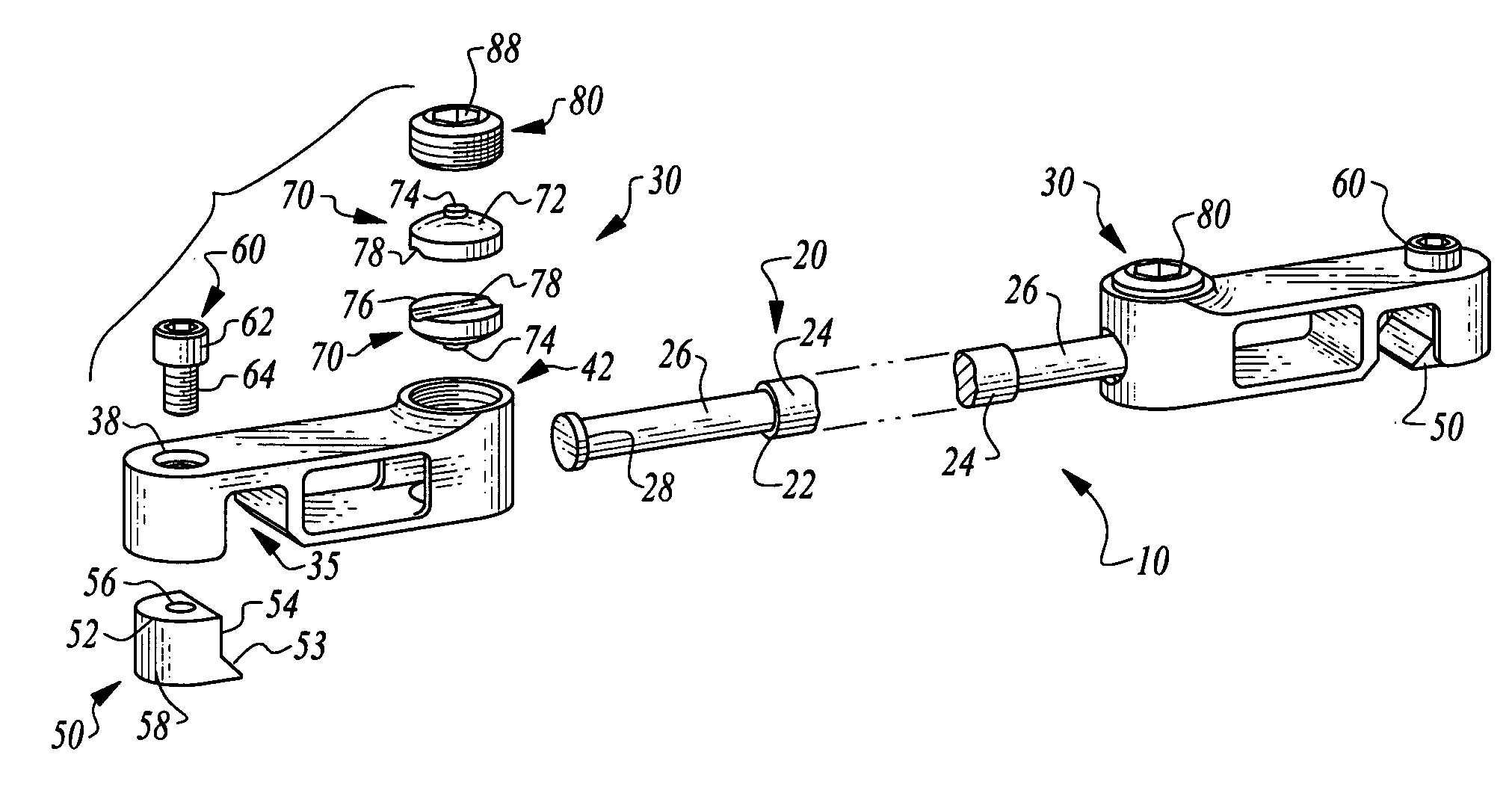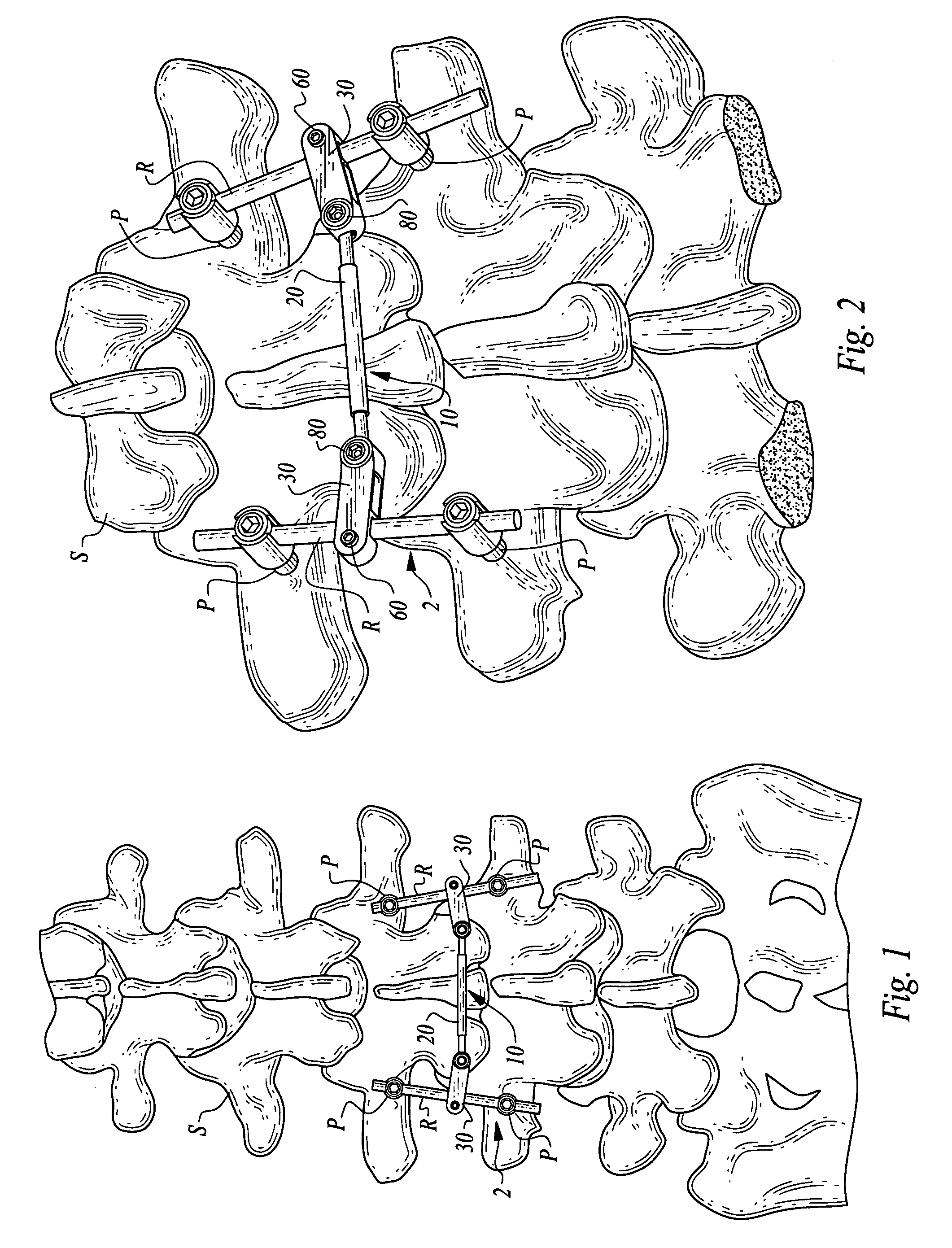Implantable spinal fixation crosslink
a crosslink and spinal technology, applied in the field of implantable medical devices, can solve the problems of insufficient degree, inability to adjust or use surgeons in the surgical setting, and insufficient strength of art crosslinks, so as to simplify the effort of linking, improve the degree of strength, and ensure the effect of equal effectiveness
- Summary
- Abstract
- Description
- Claims
- Application Information
AI Technical Summary
Benefits of technology
Problems solved by technology
Method used
Image
Examples
Embodiment Construction
[0039]Referring to the drawings, wherein like reference numerals represent like parts throughout the various drawing figures, reference numeral 10 is directed to a crosslink for joining two spinal fixation assemblies 2 (FIGS. 1 and 2) on either side of a spine S. The fixation assemblies 2 generally include a spine rod R rigidly joined to the spine S through pedicle screws P or other attachment mechanisms. The spine rods R thus provide support for the spine S to help the spine S to support longitudinal loads experienced by the spine S. The crosslink 10 is rigidly coupleable to each of the spine rods R and spanning the spine S laterally, to rigidly join the two rods R and thus the two fixation assemblies 2 securely together.
[0040]In essence, and with particular reference to FIGS. 1-3 and 16, basic details of the crosslink 10 are described, according to a preferred embodiment. The crosslink 10 includes an elongate tie rod 20 and a pair of housings 30, with one housing 30 on each end of...
PUM
 Login to View More
Login to View More Abstract
Description
Claims
Application Information
 Login to View More
Login to View More - R&D
- Intellectual Property
- Life Sciences
- Materials
- Tech Scout
- Unparalleled Data Quality
- Higher Quality Content
- 60% Fewer Hallucinations
Browse by: Latest US Patents, China's latest patents, Technical Efficacy Thesaurus, Application Domain, Technology Topic, Popular Technical Reports.
© 2025 PatSnap. All rights reserved.Legal|Privacy policy|Modern Slavery Act Transparency Statement|Sitemap|About US| Contact US: help@patsnap.com



